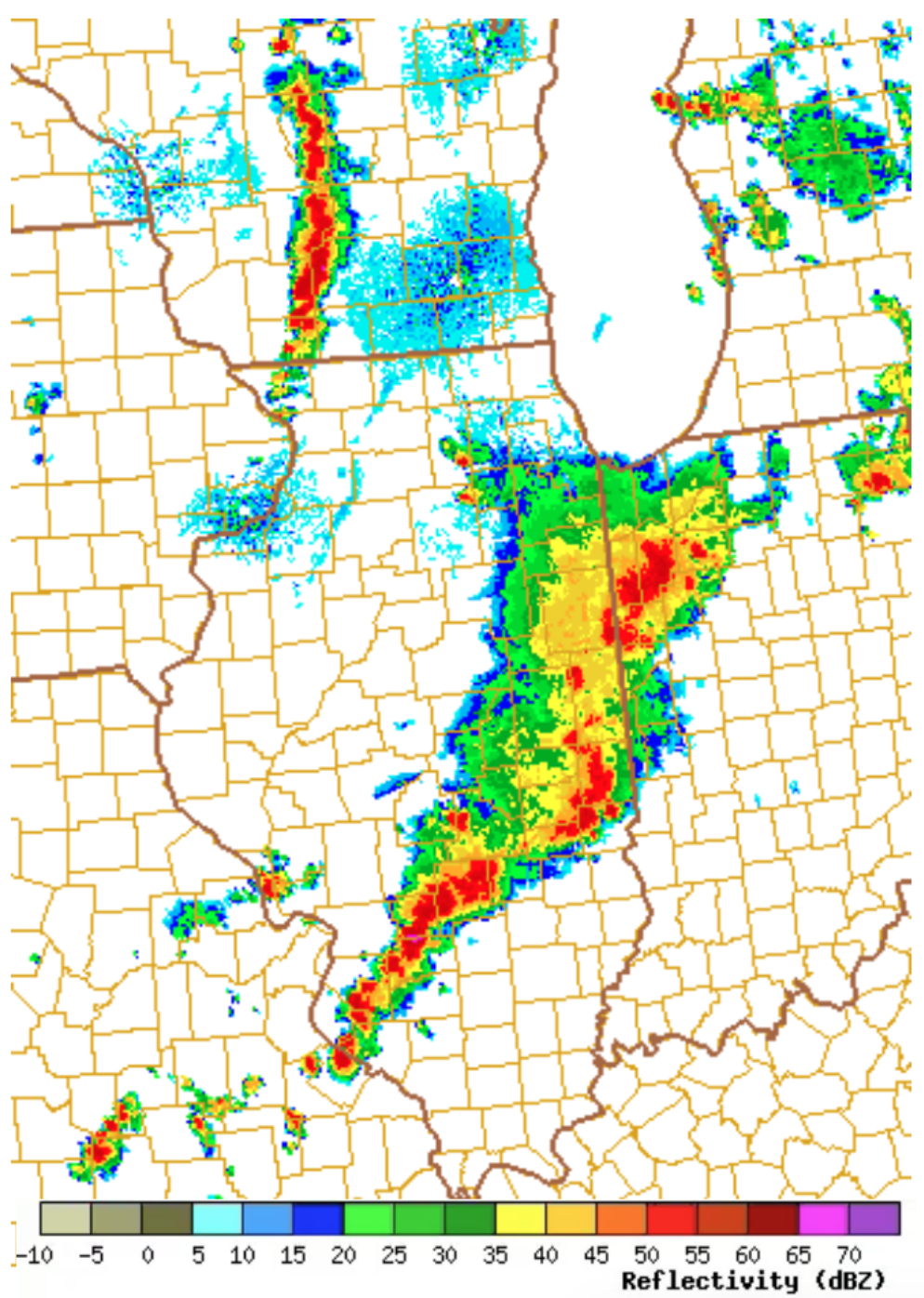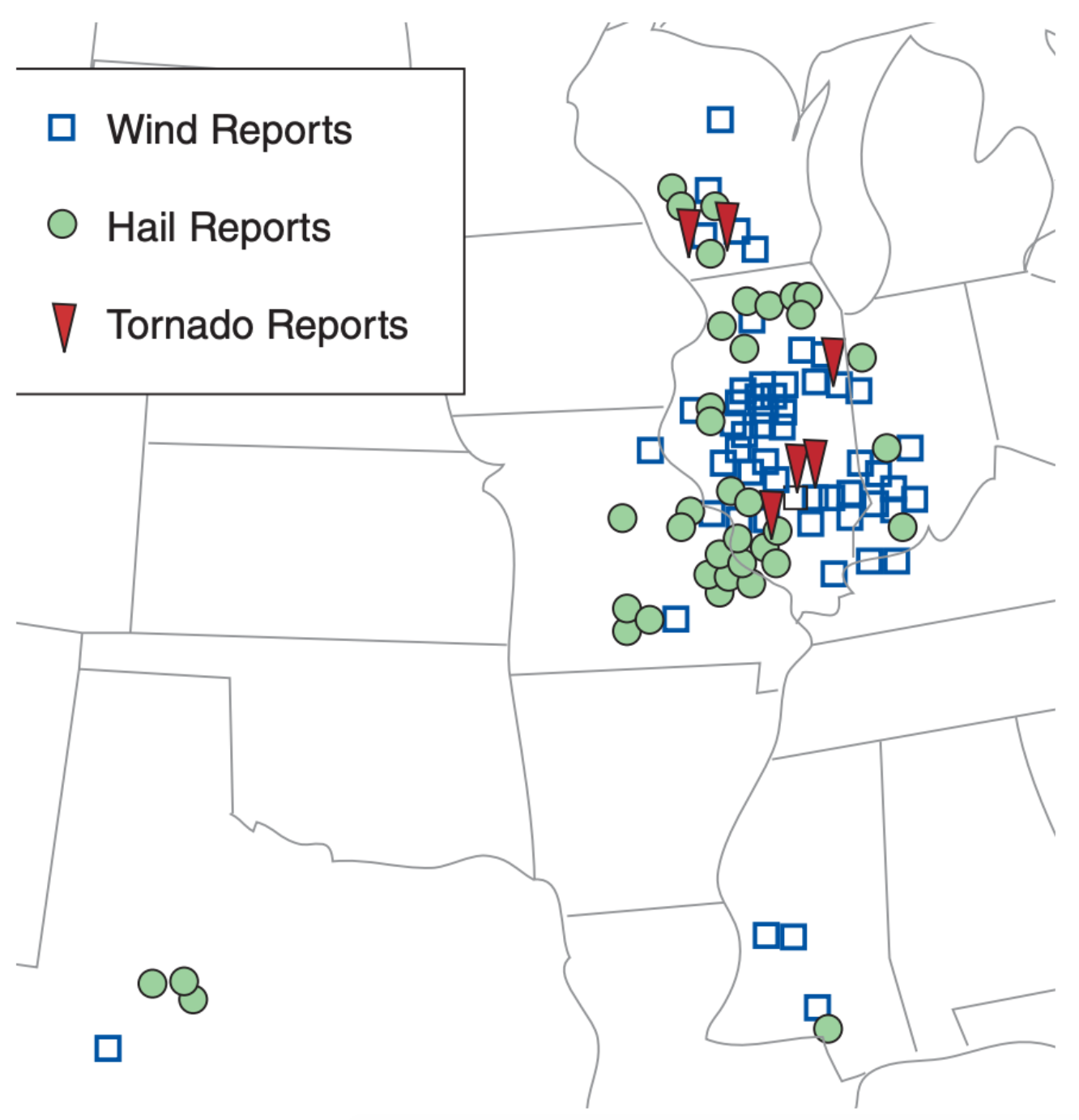14.8: Storm Case Study
- Page ID
- 10243
Throughout this chapter and the next chapter are examples of weather maps for the severe storm event of 24 May 2006. These maps presented indices and trigger locations that could be used to help forecast severe weather. The weather maps were created by the US National Weather Service and served over the internet in real time on that day, giving up-todate weather information to meteorologists, public officials, storm chasers, radio and TV stations, and the general public.
On that day, warm humid air from the Gulf of Mexico was streaming northward into the Mississippi Valley, reaching as far north as the Midwest USA. This provided fuel in the boundary layer, ahead of a cold front that spanned from Illinois to Texas. An additional trigger was a west-Texas dry line that merged with the cold front. Cold dry air aloft coming from the west contributed to the instability of the soundings, and wind shear near Illinois enabled supercells to form.
The US Storm Prediction Center anticipated that severe weather would form that afternoon, and issued a series of watches and warnings that successfully covered the severe weather area. Most of the severe weather was expected to occur that day in the Midwest, although there was also a chance of storms in Texas near the dry line.

Fig. 14.78 shows a radar snapshot of the squall line that moved across the Midwest USA at 22 UTC (5 PM local daylight time). Fig. 14.79 shows a map of the resulting storm reports, which included:
- 6 tornado reports
- 97 damaging wind reports & 1 wind >32 m s–1
- 84 hail reports + 3 reports of hail > 5 cm diam.
A total of 187 reports of severe weather were compiled for this storm case. This was a typical severe weather day.
Now that we are finished with the sections on the formation conditions and characteristics of thunderstorms we will proceed into the next chapter on Thunderstorm Hazards. These include heavy rain, hail, downbursts of wind, gust fronts, lightning, thunder, and tornadoes.



